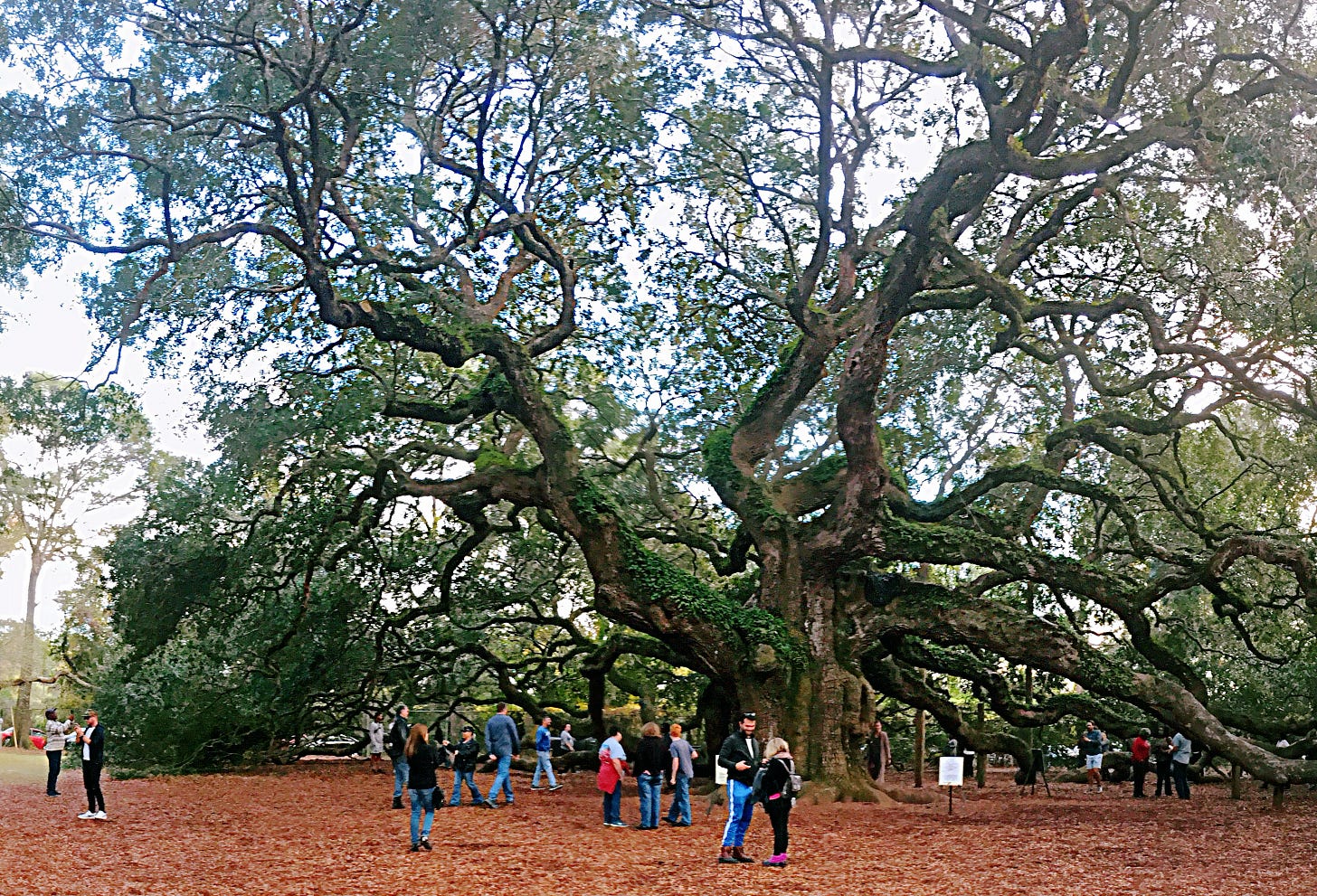Sacredness without metaphysics
Unconstrained access to sacred perception and action, compatible with skeptical naturalism.
Motivation

By separating sacredness from metaphysics:
You may gain access to sacredness, if you have been avoiding that because your metaphysical commitments say there is no such thing.
If your metaphysical commitments limit what counts as sacred and how you can relate to it, you may gain broader, deeper, freer, more vivid access than before.
Sacredness is very important for its own sake, but if you currently reject it, pointing out its relationship with purpose may be more motivating:
Sacredness underwrites purposes.
Not all purposes, but some of the “biggest” ones. That includes both personal purposes and collective ones, as a culture and society.
It’s relatively easy to locate small and mundane purposes. Big ones are nebulous, and therefore mysterious, difficult, and sometimes terrifying to apprehend. Sacred activity gives access to these purposes.
This is one reason religion is important for many people, of course! But if you have rejected religion, you may also accidentally have rejected sacredness, because they (mistakenly) seem inseparable. In that case, you will have cut yourself off from a major source of purpose—among other sorts of meaning.
Fortunately, there is no necessary connection between sacredness and metaphysics.
We can engage with sacredness as here-and-now actual-world perception and action. Metaphysical explanations are not necessary for that. In fact, they often obscure and distort this engagement.
I recommend exploring sacredness without metaphysics: as a way of accessing unexpected meanings, powerful purposes, and new possibilities for life overall. This post explains some of metaphysics’ constrictions and distortions, and sketches some methods you can use to engage with sacredness freely instead.
(Not) clarifying some common confusions of categories
It could be easy to misunderstand this post, due to conceptual confusions about what sacredness and metaphysics are. Both are famously difficult to describe or explain. Both are also confused with many other distinct concepts, such as religion and the supernatural. Ideally, I would have sorted all this out in an earlier post! I started writing that, but it got long and complicated. So I am going to press on without it, accepting that this may cause further confusions.
In clarifying the relationships between abstract concepts, this post may sound at first like philosophy. That would also be a misunderstanding. It aims to be useful, not theoretical. It is meant to supply some tools for understanding and allowing the practical activity of free engagement with sacredness.
Merely mentioning some confusions, even without analysis, may help. Any pair of these categories can be confused (and often are):
sacred
metaphysical
supernatural
mythic
religious
spiritual
sublime (in the sense of aesthetic theory)
good (in any sense, including ethical)
Often, all these get boiled together into mush, with any of the words used as a vague description for the whole. However, they are not just conceptually distinct. They are each separable in practice.
Why do those confusions matter? Because you might fixate or deny some, on the basis of good reasons for denying or fixating others. For example, it’s common to rigidly categorize as sacred all and only those things designated as such by authority figures in your religion. Or, to reject all sacredness as superstitious nonsense, on the basis of your reasons for rejecting the supernatural. I suggest that, in both cases, you may miss something important.
Or, you may feel compelled to convert to a religion you don’t actually believe in, because it seems that belonging to some religion is the only way to engage with sacredness. That’s awkward. Or should be.
Or, you might reject the mythic mode on the grounds of good reasons for rejecting the supernatural or religious. And that may result in missing out on a major source of creative inspiration, even for technical work, which doesn’t inherently involve any of these other categories.
In fact, you could reject all the items in the bullet list above except the sacred, but care for that. It is not the same thing as any of them, and it’s fully separable.
Personally, I do find it useful to combine my engagement in sacredness with mythic and religious activities (which are also not the same as each other). But that is not at all necessary!
Mistaken metaphysics of sacredness
Sacredness is one of the “dimensions of meaningness.” We can analyze it, briefly, in the standard Meaningness framework. That’s summarized in “The psychological anatomy of a stance.”
“Confused stances” result from simple, mistaken metaphysical assumptions, often unthought.
One is that any sort of meaning must be fixed in place by some metaphysical entity or principle, which causes or designates the meaning. (I call this stance eternalism.)
In monotheistic religions, the eternal ordering principle is God. Everything means whatever God makes it mean; no more, no less. So things are sacred if God makes them so, directly or indirectly through one of His representatives. Otherwise, they are not.
Atheists often reject sacredness because they agree with monotheists about this. They accept the assumption that sacredness could only come from God—usually without thinking it through. Then, since God doesn’t exist, there must be no sacredness. This stance is nihilism in the dimension of sacredness.
Nihilism and eternalism may appear to be opposed opposites. But, they share the same fundamental metaphysical commitment; so they are nearly the same thing at root.
A third possibility is that we are the source of meaning, as individuals. Then sacredness is merely subjective, and therefore a matter of personal choice. Underlying this existentialist stance is the metaphysical assumption that meaning must be either objective or subjective. This is a mistake, as I explained in “Rumcake and rainbows.”
There is a fourth possibility, that meanings are interactive, rather than either external or internal to ourselves. They are like rainbows, which are three-way interactions among the sun, water droplets, and an observer.
An example is fairness. It is a property of an interactive process; a sequence of events involving multiple people, and usually non-human objects as well. We can perceive whether or not a process was fair, and most of the time we agree about that. There are patterns to fairness, as with other meanings, so it is not non-existent. Nor is it merely subjective: we often have beliefs and feelings about fairness, but those are not the fairness itself. And we can’t simply choose, as individuals, what is fair or not. But fairness is also somewhat nebulous, which is one reason for occasional disagreements. It is not objective, not simply intrinsic in external objects, and not fully reducible to any abstract system of rules.
Sacredness, like fairness and other meanings, is a matter of interactive processes in the actual world. It is not illusory or non-existent. Sacredness is not a belief or feeling—although it may be accompanied by those. There are regular patterns to what counts as sacred; but it is also somewhat nebulous.
This is an unfamiliar idea. I’ll explain it; but first we’ll cover the confused stances toward sacredness, and why they don’t work.
Metaphysics is justification for confused stances
A main purpose of metaphysics is to justify claims about what is or isn’t sacred, and what such claims imply.
Everyone used to accept that sacredness is inherent in particular physical objects; or that someone—human or supernatural—can cause sacredness just by their say-so. Then skeptical rationalism came along and demanded to know how that was supposed to work. No meaning without explanation!, it proclaimed.
Objective and subjective rational explanations of sacredness, situated in the actual world, were attempted by Ancient Greek philosophers. Those didn’t work, because sacredness isn’t objective or subjective.
To stave off nihilism and reinforce eternalism, the Greeks invented the metaphysical world. They imagined that as the place meanings—especially sacredness—live. Then sacredness could be explained in terms of metaphysical mechanisms instead of physical ones. The metaphysical world is non-physical, yet supposedly more Real than the actual world. And for that reason, these explanations justified the absolute objectivity of meanings—especially sacredness. This is mainly still how philosophers and theologians explain things.
This is dysfunctional, because the metaphysical world is not merely imaginary, but an abstract, almost purely conceptual construction. Metaphysical explanations are unconstrained by actuality, and therefore mainly false and harmful.
(Metaphysics differs here from myth, which is imaginary but meaningfully grounded in concrete, embodied experience. Myth can be helpful, including as a way of engaging with sacredness. It can even be “true in some sense,” so long as you relate it with actuality intelligently.)
Many people treat metaphysics itself as sacred—although they might not recognize that explicitly. When I insult metaphysics on social media, people react as if I had insulted their religion (which is something I don’t do). Metaphysics is treated as sacred because it justifies other sacredness. It offers the standard alluring eternalist promises of certainty, understanding, and control—but it cannot deliver.
Once we understand that sacredness doesn’t require justification, metaphysics loses most of its own reason for being. If metaphysics doesn’t justify sacredness, or ethics, purpose, or personhood—as it can’t—then it is revealed to be a useless clutter of vague, imaginary abstractions. Then it surrenders its malign power over us.
In modernity, skeptical rationality started to notice that metaphysics is false and harmful. The credibility of the objectivity of meanings, underwritten by metaphysics, began to disintegrate. Once again, this threatened a nihilistic collapse.
As an alternative, rationalist scientism demanded physical explanations instead of metaphysical ones. That was potentially progress. Unfortunately, though, scientism mostly just replaced metaphysical items with “mental” ones, which are nearly the same thing.
“Cognitive science” moved the whole metaphysical domain, with all its imaginary contents, from heaven into your head, as “mental representations.” Those are supposedly physical things in your brain which behave metaphysically. No one can explain how that would work. It can’t work, and it doesn’t. Fairness is not a mental representation. It is something we see and do.
Sacredness is not a mental representation. Belief is irrelevant to sacredness—at least “belief” as theorized by Christian and rationalist metaphysics.
Sacredness is something we see and do. It is not subjective.
Sacredness is not subjective

Sacredness is a seeing-as, and treating as. It’s not objective, because we are involved as human beings. The things we see and treat as sacred would probably not be seen or treated that way by tentacle aliens from the Andromeda galaxy.
However, it’s not subjective, either. You can’t just choose see or treat most things as sacred. (Unless you do a lot of meditation or drugs or something.) There are patterns in what is and isn’t sacred. Regularly, houseflies, pop-tarts, and highways are not perceived as sacred.
Regularly, cross-culturally: the sky and sun and the moon, the ocean, mountains, ancient trees, and unusual rocks are sacred.
Even children raised non-religiously, with no exposure to metaphysical ideas about sacredness, engage with such things as sacred. Me, for instance. My parents were atheists, and I had zero religious instruction. But there was—for example—a particular willow tree by a pond near our house that I related to as sacred. I did not have that word for it then, but I remember our relationship clearly.
We know that sacredness isn’t “just an illusion,” due to this regularity. Some of the work of sacredness is done by the perceived, in offering or not offering easy perception as sacred.
Even if you refuse to regard trees as sacred, you can easily see which trees might be considered sacred by other people. Here are two impressively large trees. One is sacred and the other isn’t. Which is which?


The tree in the first photo is beautiful, but treating it as sacred would be idiosyncratic; probably mistaken, even.
The tree in the second photo is is the Angel Oak, on Johns Island near Charleston, South Carolina. It is ugly, in my opinion, although emotionally affecting. It is somewhat creepy and horrifying, actually. In terms of aesthetic theory, it’s sublime, not beautiful.
The Angel Oak is treated as sacred, even by people who might reject the possibility of sacred trees on metaphysical grounds. Here it is again, with worshipers:

It’s a major tourist attraction, with 2,484 reviews on TripAdvisor. People drive long distances to gaze upon it and marvel. One review describes it as “an absolute must see. It is beautiful and mesmerizing.” Another, as “one of the most magical things I have ever experienced.”
The obvious sacredness of the tree has inspired an extensive mythology. “Local folklore tells stories of ghosts of formerly enslaved people appearing as angels around the tree.”1
For her book Ghosts and Legends of Charleston, Denise Roffe interviewed an old African American woman, a descendant of slaves who once labored on the land near Angel Oak. She recounted a legend that the tree was home to giant vultures who feasted on the bodies of slaves who were hung from the branches. She said that the tree had a curse on it due to the violence that occurred there and that slaves felt that the tree was a bad omen. She also claimed that Native Americans met underneath the tree and made it a sacred burial ground and believed it was the spirits of Native Americans that protected the tree and kept it alive and safe.
In recent years, reports of glowing lights and faces have been reported. In 2008, a couple was married under the tree and returned a few months later during a full moon to have a romantic moment where they were married. They reported seeing glowing human forms gathered around the trunk and some up in the branches.
Another couple visited the tree one evening. The husband tried to carve a heart into the bark as a symbol of their love but stopped when he heard noises nearby. The wife was feeling uneasy, and she asked him to put his blade away. She claims she saw a fiery face appear in the branches. She said she saw another anguished face in the surrounding trees. As they ran back to the road, they looked back to see a group of lighted souls gathered around the trunk.2
Sacredness: nebulous patterns of interaction
The complete stance neither denies meanings, nor fixates them. It recognizes that they are both nebulous and patterned. Whether something is sacred or not, and what that implies, is never definite, never absolutely true or false.
The complete stance recognizes that meanings are neither objective nor subjective. This dichotomy is a metaphysical concept insisted on by rationalism. It isn’t a normal idea that people have in pre-modern cultures, or who have little exposure to rationalism today.
Sacredness is like tastiness. It’s an interaction, not inherent in what you eat nor in you, although both play a part.
The non-subjectivity of sacredness is probably partly biological, in the same way that the non-subjectivity of tastiness is partly biological. Both are nebulous, and subject to disagreement, but also patterned by innate, genetically-determined causes.
The non-objectivity of tastiness is not a problem. People disagree about what tastes good, but rarely get into huge fights about it, because it’s not usually a big problem for people to like eating different things. No one is a nihilist when it comes to tastiness on the basis that it’s not inherent in substances. No one thinks disagreements imply that tastiness is an illusion, or does not exist.
People disagree about what is sacred, and that can be a huge problem, because they derive normative claims from supposed sacredness. You are supposed to do, or not do, particular things on account of considerations of sacredness.
What one perceives as tasty is not just due to biological factors. Cultural concepts, social practices, and one’s own habitual activities also affect tastiness and how one relates to foods. Likewise, our engagement with sacredness is also patterned by society, culture, and our own activity. Someone from an uncontacted Amazon tribe would not recognize other cultures’ religious paraphernalia as sacred. Part of tourists’ response to the Angel Tree must often be shaped by knowing about its mythology.
Also, doing sacredness, as ritual, worship, or religious practice is most effective as a communal activity. One person’s refusal to treat certain baked goods as sacred may cause lots of trouble for everyone else in their community—and for them.
Potentially, anything might show up as sacred, depending on how you see and act. We can also make arbitrary objects sacred though ritual interactions with them—especially as a group. Typically, though, some of the work has to be done on both sides: the perceiver and the perceived. It is not easy to make a housefly, pop-tart, or highway sacred. It is possible by applying sufficient social pressure. The Catholic Church does perform pastry miracles. In some situations, refusal to treat some things as sacred can result in personal catastrophe, up to execution. Non-subjective sacredness is a social reality.
Free engagement with sacredness, without religion
Maybe you have long refused to engage with sacredness because of your metaphysical commitments; or maybe you have only been willing to engage with it in certain specified ways, as authorized by your religion or other metaphysical framework.
Maybe that isn’t working well for you now. Realizing that, people often go searching for a replacement metaphysics when their religious or anti-religious commitment flags. Or they may try to assemble their own. These moves are unhelpful, as I explained in “Vaster than ideology.” All metaphysical systems are mistaken.
And, sacredness is not a matter of belief, but of seeing and doing. Changing what you “believe” matters only if it changes those. Instead, you can change how you see and what you do. This is partly a matter of attitude, and partly of deliberate practice.
Suppose you are willing to let go of worrying about metaphysics, and want to engage with sacredness freely, unconstrained by dogmas: how do you do that?
Implicitly, this is the subject of practically everything I write. I hereby gesture vaguely toward all that… There’s a lot of it! So here I will first just briefly describe some non-religious ways of finding and engaging with sacredness. And then also some religious ways that I find useful—although I reject the metaphysics that traditionally come with them.
As a matter of attitude, you can bring to bear the textures of the complete stance: wonderment, open-ended curiosity, humor, play, enjoyment, and creation. You can simply notice these as they arise, and allow them to persist and intensify.
Or, you can take them as deliberate practices themselves. For instance, my page on wonder, in the section “Wonder as a method,” explains practices of attention and suspension that encourage wonderment. And wonderment is a mode of seeing necessary in relating to sacredness.
I wrote about sacred perception in theory and practice in “At the Mountains of Meaningness,” with examples from my experience and others’.
Sacredness, I’ve emphasized, is not just seeing, but also doing. Religious ritual is the obvious example, but sacred activity can also be non-religious.

Adding a small rock to a summit cairn is a common way of engaging with the sacredness of a mountain. This is something people do naturally, without any religious idea in mind. As with the Angel Oak, it is a spontaneous response to the sacredness they perceive:
Just about every hill on West Ardnamurchan has some sort of cairn at its summit—this one is on Creag an Airgid, the silver crag. When we come across one, each of us dutifully adds a new stone, but without really thinking about why we do it—other than that, perhaps, it will bring us good luck. So, sometimes, we add an extra one, and think of someone in the hope that it’ll bring them good luck too.3
Sacredness, as an interaction, may just be transient, a momentary thing. But often it goes beyond interactive, and becomes relational. Sacredness grows with familiarity and repetition. There are places in the Tahoe Sierras that I found beautiful and interesting when I first saw them, but after returning to them over and over, they increasingly became sacred for me as well. The moon is pretty, and I’ve found it fascinating as physics and natural history. But since choosing to also regard Her also as a goddess, I have had an on-going romantic love affair with Her, many decades in duration.

Blessing can be a deliberate non-religious sacred practice. You can do this! No special qualifications are required. You do not need a clerical collar or an elegant (if ridiculous) Tibetan lama’s hat.
Whenever it occurs to you, you can think “I bless this place.” Or this person, or thing, or situation, or project. You can say it out loud. You can think or say something uplifting, something about the benefit you intend the blessing to bring. You can imagine the blessing radiating from your heart and sanctifying the blessed.
“That’s a ridiculous superstition,” says rationalism. “You can’t magically change anything just by thinking nice thoughts. That’s just in your mind, not in reality.”4
Well, at minimum it’s likely to change YOU. At minimum, how you perceive things, but probably also how you do things, and how you relate to places and people and things. And how you are affects other people, and thereby other non-people things.
Free engagement with sacredness, with religion
Tanya Luhrmann is an ethnographer who spends years embedded in diverse religious communities as a participant-observer.5 She learns how their embodied practices—of seeing and doing—potentiate and shape their engagement with sacredness. Her book How God Becomes Real: Kindling the Presence of Invisible Others describes cross-cultural patterns in these practices, and offers plausible theories about how and why they work.
Vajrayana Buddhism is the religion I practice. Its metaphysics are mostly at least as silly as those of other religions, so I do my best to ignore them. Instead, I find its attitudes and methods inspiring and effective as means for accessing and engaging with sacredness.
Some prominent Tibetan lamas explicitly teach secular Vajrayana, in which they include methods for accessing non-religious sacredness. I started that way, but I’ve come to practice Vajrayana religiously: as including relationships with imaginary gods, and as communal ritual.

Vajrayana has two parts, tantra and Dzogchen. Buddhist tantra is a methodology for deliberately entering the mythic mode to alter your perception and action so that you see and engage with everything as sacred. Even houseflies, pop-tarts, and highways. This is somewhat artificial; it overrides the natural patterns of what is sacred and not.
In Dzogchen, you allow anything to show up as sacred, and engage with it spontaneously as it does. Explicitly, there is no method to this. Typically, you are expected to have practiced tantra first, so that you are familiar with the experience of things appearing sacred that would not usually. Then you can allow that, instead of dismissing the perception of a sacred highway because it doesn’t fit your preconception.
Anything can also show up as non-sacred. To some extent, we get a choice. There’s skill in judgement about whether it’s better to engage with something as sacred or not. In Dzogchen, this skill is spontaneous, instantaneous, meta-systematic, and often inexplicit. Skillful choice gives great freedom in religious experience and activity.
According to Wikipedia.
This is from the anonymous Kilchoan Diary blog.
Rationalists don’t actually believe the mind is real, even though their whole metaphysics depends on its existence. At some level, they recognize that “the mind” is their imaginary metaphysical construct.
Luhrmann’s graduate thesis advisor Jack Goody was also my mother’s graduate thesis advisor. We are academic siblings, sort of. Or, I guess she’s my aunt. Or something. Kinship is confusing, which is why anthropologists and other humans are obsessed with it. Anyway, part of my understanding of religion comes from my mother, who was somewhat a Neopagan witch. Luhrmann’s participant-observation PhD thesis, published as Persuasions of the Witches’ Craft: Ritual Magic in Contemporary England, also made her somewhat a Neopagan witch. I was somewhat a Neopagan witch at the same time Luhrmann was doing her research, having become one independently from both her and my mother. The world is surprisingly small. And confusing.



I take issue with your example that highways aren't typically sacred. I argue they're one of the most accessible modern sacred structures. Consider highway 1 or route 66, they have an almost mythic status in American pop culture. Maybe I'm getting the concept wrong but if a highway has been featured in multiple blues songs it's probably got some aspect of sacredness.
A lot of food for thought in this one. For me personally, while free engagement with sacredness as you described here rather resonates, feels pretty natural and something I do in general, I have problems with using the term "sacred". Because my particular confusion is probably closer to confusing it with the religious (or state-created, or even sometimes commonly-inculturated) phenomena that is basically closer to taboo. Pretty much, everything that is touched by "sacredness" can't be argued back and it has a tendency to spread and let unwholesome things fester under its cover.